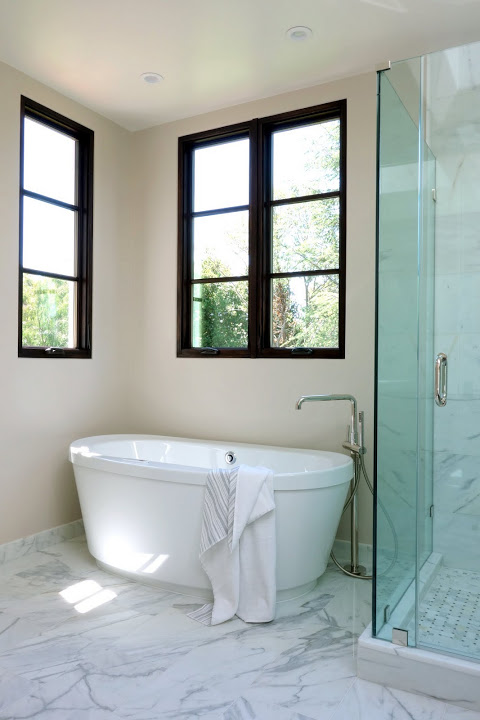These resources are from an archived version of our website. Want to see what we’ve been up to lately? Check out our new website.
Radiant Floors: Overkill in a Passive Home? (Part 1)
Few other heating methods get people so excited as do radiant floors – and for good reason. The delight of going barefoot on a warm surface is hard to beat. Think of a warm hardwood deck on a chilly day… or a picnic on a sun-baked rock.
Radiant floors bring the pleasure home, heating your floor directly, which then radiates warmth into the room for a thoroughly comfortable atmosphere.
A fantastic idea. But in a passive house – one that’s super-insulated and highly efficient, such as the homes we build at Clarum – does the idea hold up to reality?
Our Radiant Experiment
Between 2004 and 2006, Clarum Homes built four experimental houses in Borrego Springs, CA – part of the US Department of Energy’s Building America Program (BAP). The goal was to identify techniques and designs that work in hot, dry climates, while outperforming conventional homes in energy savings.
We installed radiant floors in three out of four, with cross-linked polyethylene tubing embedded in concrete slab every 12 inches. The system included tankless water heaters, controls, heat exchangers, pumps, expansion tanks and other components.
Radiant flooring provided all the heat in these homes; the air handler was only for cooling. Both heating and cooling were controlled by the same thermostat.
Benefits We’ve Found
Radiant floors are not without their benefits:
- It is extremely comfortable
- It creates a nice uniform temperature throughout the home
- There’s little fluctuation in temperature throughout the day
- It doesn’t interfere with your furniture (you don’t have to think about vent placement when deciding where to put the bookshelf)
However, radiant-floor systems don’t provide heat quickly from start up. Rooms can take several hours to reach comfortable temperatures. Also, if installing a hydronic radiant-flooring system, leakage from the piping can be expensive to repair and can cause significant damage if not detected early.
Energy Savings?
Some say radiant floors also save money and energy, because you can set the thermostat lower. There’s little evidence for this, but even if there were, you’d have to ask what difference it makes.
In a high-performing home, one with extreme insulation and an airtight shell, you lose very little heat through walls and drafts. As a result – whether you prefer 67 or 75 degrees – it takes little energy to maintain living temperature.
For example, in the homes we build, 16 watts heats an entire house.
So, the savings gleaned by turning the thermostat down don’t add up to much. On the other hand, the upfront investment could, costing between $10 – $20,000 (depending on house size). Radiant floors can be pricey, both financially and environmentally.
In our super-insulated passive homes, we’ve found that while radiant floors can bring some benefits, “savings” isn’t one of them.
Check back for Part Two…
…and find out whether or not radiant floors actually feel warm to the touch when installed in a passive home!
Learn more about Clarum Homes and our process of building custom, sustainable homes. Call 650.322.7069.









